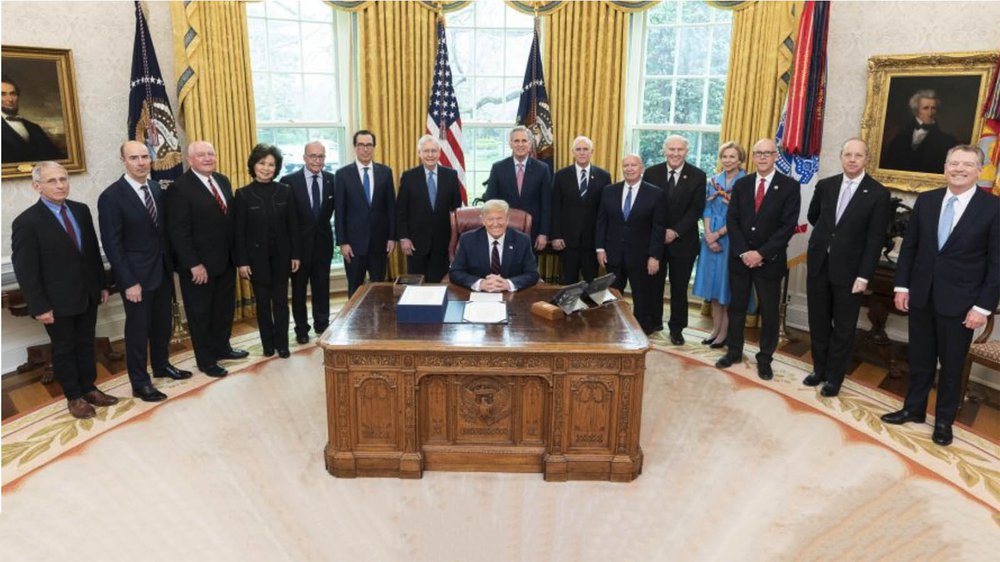$30.75 Billion. That sounds like a lot of money. Included in the Coronavirus Aid, Relief, and Economic Security Act that Congress passed, approximately $30,750,000,000.000 was appropriated for education. See how big it looks when you write it out? It looks even bigger when you realize that this money comes with very few strings attached. Here’s how the funding shakes out:
• $13 billion for K–12 state education agencies
• $14 billion for institutions of higher education
• $3 billion for governors to support K–12, higher education, and other education-related entities
• $600 million for states with the highest coronavirus burden, Bureau of Indian Education, and outlying areas
The amount of cash delivered to individual states and districts will be based on the amount of Title I money each state or district receives. States are required to give at least 90 percent of their cash to school districts.
Now here’s the thing – the money can be used for any purpose outlined in any of the following laws:
- Every Student Succeeds Act (ESSA)
- Individuals with Disabilities Education Act
- Carl D. Perkins Career and Technical Education Act
- McKinney-Vento Education for Homeless Children and Youth Act
- Native Hawaiian Education Act; Alaska Native Educational Equity, Support, and Assistance Act
- Adult Education and Family Literacy Act
The money can also be used for any of the following:
• coordinating with public health departments
• conducting activities to address the needs of students from low-income families, children with disabilities, English learners, racial and ethnic minorities, students experiencing homelessness, and foster care youth
• purchasing educational technology (including hardware, software, and connectivity as well as assistive technology or adaptive equipment)
• implementing activities to maintain the operation and continuity of services and to employ existing staff
The Caveat
To receive the cash, states must provide a guarantee that they will provide at least as much funding for K–12 and higher education in fiscal years 2020 and 2021 as they did for K–12 and higher ed in the three previous fiscal years. But this can be waived by the Secretary of Education for states that experience a “precipitous decline” in financial resources, which is likely to be just about everyone due to the rise in unemployment and subsequent decline in state taxes.
Cutting through the red tape
Waiver requests for ESSA restrictions will be reviewed, approved or disapproved by the Secretary of Education within thirty days period. Waivers will be in effect for the 2019–2020 school year. Policies that can be waived under the expedited process include annual state testing (the process for this waiver already has been disseminated to states), state accountability and state and local reporting requirements related to testing and accountability, maintenance of effort requirements for districts, 15 percent limit on carryover Title I funds for districts and Student Support and Academic Enrichment Grant (Title IV-A) requirements for districts including the requirement to expend specific percentages of cash on certain activities and the 15 percent limit on technology purchases.
Many thanks to the Alliance for Excellent Education for condensing this information into an understandable format. This data was presented at a recent EWA online event, and was sent to me by Kelsea Kierstead at C Blohm & Associates.
Stay tuned for more on the Coronavirus Aid, Relief, and Economic Security Act (CARES). Makes me wonder if there is someone in Congress whose job it is to think of names for bills that create these marvelous acronyms. One of the biggest questions yet unanswered is how we can ensure that every child who doesn’t have sufficient home Internet access can get it. All our remote schooling plans will be for naught unless we can make this happen.
About the author

Charles Sosnik is an education journalist and editor and serves as Editor in Chief at the Learning Counsel. An EP3 Education Fellow, he uses his deep roots in the education community to add context to the education narrative. Charles is a frequent writer and columnist for some of the most influential media in education, including the Learning Counsel, EdNews Daily, EdTech Digest and edCircuit. Unabashedly Southern, Charles likes to say he is an editor by trade and Southern by the Grace of God.











